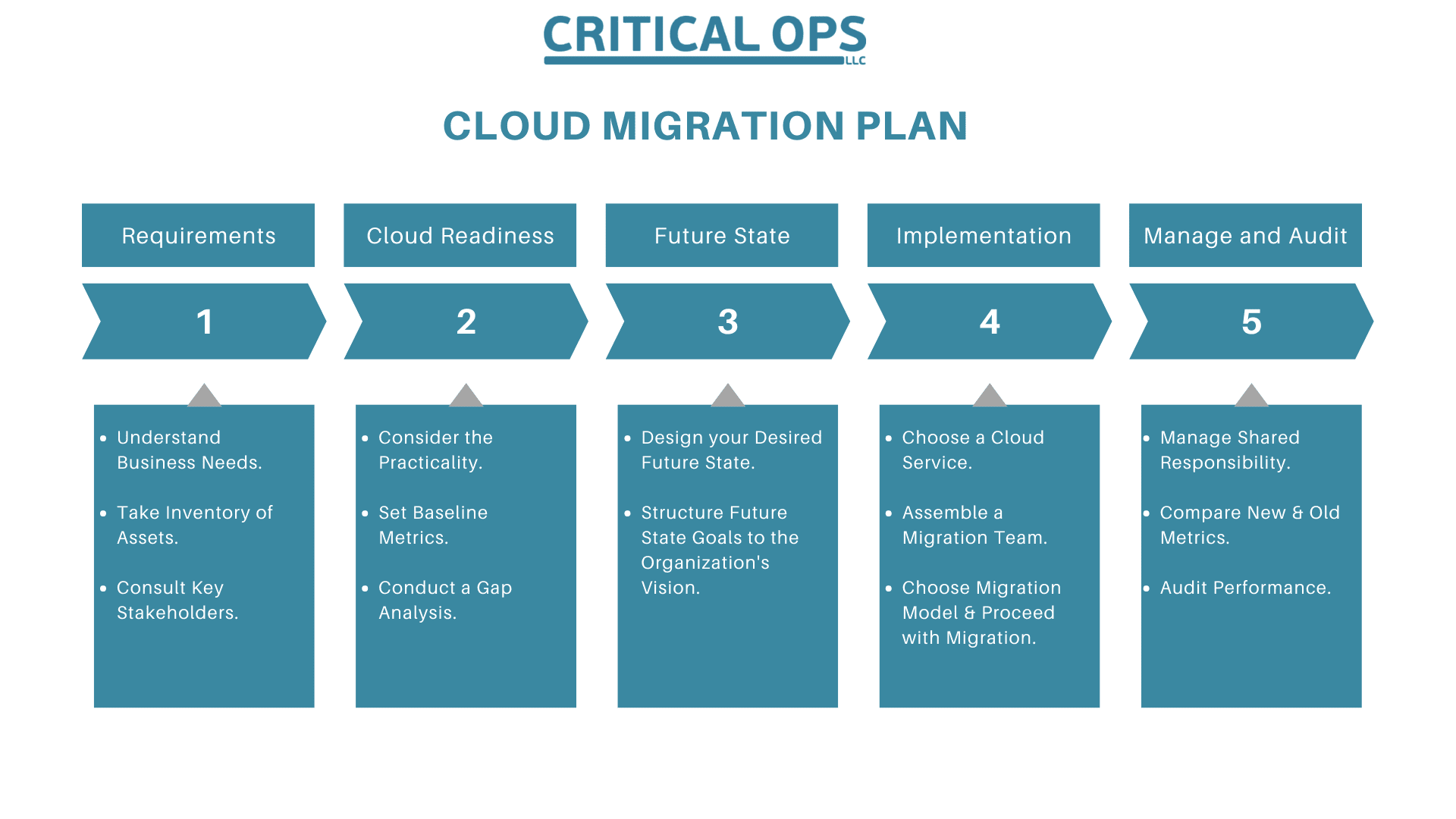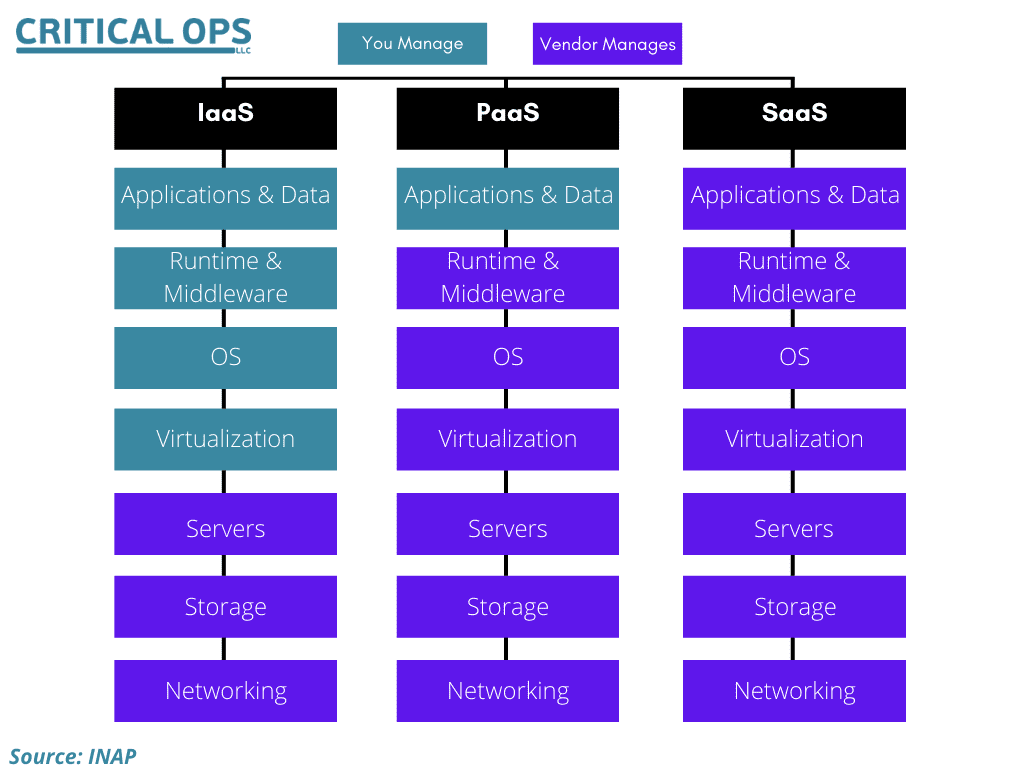We have commonly heard the adage, “there is only one way to eat an elephant: a bite at a time.” After all, this saying captures something very true about people. We are inclined to take complex things, break them down to the simplest form, and accomplish our goals. The same is true for anyone looking to migrate over to the cloud, a bite at a time!
Successful cloud migrations will capture this idea at the foundation. There is much work to be done upfront, discovering all the unknowns and putting a strategy in place. This will guide the migration in the right direction.
The Roadmap
There is a long path to travel down before your business can arrive at the final destination. When you create a roadmap, you reduce the confusion that can arise during a cloud migration.
Consider the chart below as an example of what this will look like for an organization.
This chart is not exhaustive, but it will give you a clear understanding of where to start. Hasty cloud migrations violate fundamental change management principles and cause unnecessary problems for a business down the line.
Cloud Services
Cloud vendors provide you with a few types of services; the most common are: Software as a Service (SaaS), Infrastructure as a Service (IaaS), and Platform as a Service (PaaS). The different types of cloud models that cover these categories are public, private, and hybrid. The services provided by these vendors have revolutionized the way we conduct business.
This graph represents the different levels of responsibility found in each service. Many cloud service providers have adopted a shared responsibility model.
Requirements
This is an important stage; what is uncovered here will make the process more efficient.
The first step in the requirements stage is to understand your business needs. The cloud is another tool among many in your organization to achieve business objectives. Here you can determine what business objective is a cloud fit and which is not.
From there, taking inventory of all business assets related to the cloud is necessary. There may be unknown assets used by each department; consult with the right individuals and determine if that is the case. Many organizations fail to map all their assets and must go back and dig around searching for what they have. This bullet list will give you a better picture of what to look for:
- End-user devices (desktops, laptops, phones).
- Software.
- Hardware.
- Network infrastructure.
- Data.
- Servers.
- Storage.
- IoT devices.
- Current cloud systems (if any).
Once all the unknowns are brought to the surface, the next step is consulting with key stakeholders that the decision will impact. These stakeholders can give guidance in areas like cost, legality, business continuity, and more.
Cloud Readiness
Based on your business requirements, you can map the practicality of cloud migration. If the current state of your business would not benefit from the cloud, it is wise to reconsider. This is not to say it will never happen, but things need to be worked out before it does. However, in most cases, cloud migration is practical and beneficial to a business. Some notable benefits: the cost-effectiveness of the cloud, scalability, and greater collaboration and productivity.
If an organization determines cloud practicality, it is time to set baseline metrics. These metrics will be a foundation to measure the performance and efficiency of your cloud solution. Consider this example from AWS, “Steady-state (i.e., non-peak) server utilization should be within 20% of pre-migration levels.” These performance metrics and KPI’s can be mapped to the normal for your organization pre-migration. Each metric will vary from organization to organization based on everyday business functions and objectives.
Finally, since you have already done the hard work of discovering everything that sits on your business property line, you can conduct a gap analysis. The gaps will expose areas that will translate well and others that need revision. For example, revision of an asset can be: “re-factoring, re-hosting, re-platforming, re-purchasing, or retiring.” A budget is also vital in this stage because you will find gaps that need to be closed. When you compare these gaps to your baseline budget, you will see if you plan to spend more or less than you need.
Future State
The future state can be viewed as a fresh start. The cloud offers a lot of opportunities to businesses to start chipping away at their end goals. Use the cloud as a stepping stone to a modernized business and desired future state. This is the stage where goals are mapped to the organization’s broader vision. Every aspect of your business is aligned towards marching to that vision. When you identify the fruit you are looking to bear from the cloud; you will have greater confidence in the migration.
Implementation
By this stage, the big picture has been painted. The service of choice will be apparent; public, private, or hybrid cloud. You will also determine the form; SaaS, PaaS, or IaaS. These are the most popular, but they are not the only options.
Next, a team needs to oversee and participate in the intended cloud implementation. The team can be contracted out and built internally to assist individuals on staff that have the skillset to accomplish this. The alternative option is to utilize the cloud service provider’s migration team to your advantage; this will likely be an add-on service at a cost. This team will often be a hybrid between your internal team and the cloud service provider’s team of experts.
Now is the time to roll up the sleeves and make this happen! Referring back to our starting statement, this is one bite at a time, one phase at a time. The most common implementation approaches are:
- Lift and Shift – requires moving data from one place to another with little to no modifications.
- Improve and Move – similar to lift and shift, but minor modifications do occur during implementation.
- Rip and Replace – the most extensive; this requires rewriting an app from start to finish and getting rid of its old components in the migration process.
Manage & Audit
The shared responsibility model was introduced earlier in this article, and this is a fitting place to expound on it. Based on agreements made between a business and a cloud provider, and the chosen service model, it will be clear what the business is responsible for maintaining. In this last and ongoing phase, a business will manage its side of the deal to keep the cloud functioning effectively and efficiently.
Once your cloud service has been operating in your production environment for a time, it is good to audit its performance and compare benchmark metrics to baseline metrics. Here you will discover if the cloud is advancing you towards your goals and adjust if you are below the baseline.



